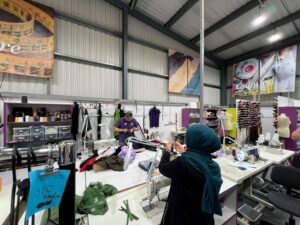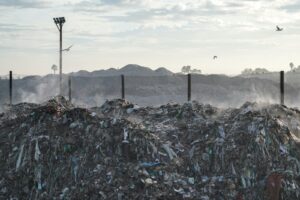In Practice: the digital drivers for tackling food waste in manufacturing
According to WRAP, 1.85m tonnes of food is wasted during the manufacturing process every year, the equivalent of 200 times the weight of the Eiffel Tower. This equates to £1.2bn per annum of direct cost affecting the bottom line of the UK’s food manufacturing sector.
In this article, Philip Simpson, commercial director at ReFood, highlights what steps food manufacturers can take to reap the commercial benefits of tackling food waste.
ReFood’s long-stated ambition has been to eliminate food waste from landfill by 2020. In fact, if we were to achieve zero food waste to landfill nationwide, then by 2020 we could generate over 1.1tW of energy, 27 million fewer tonnes of greenhouse gas emissions, return over 1.3 million tonnes of nutrient-rich fertiliser to farmland and save the public sector over £3.7 billion – a huge economic benefit which is currently being overlooked.
Today, the vast majority of food waste is still being sent straight to landfill – at a huge cost, which of course, will be passed on to consumers. Diverting it from landfill should be the goal for all unavoidable food waste, but what about the avoidable food waste that is costing the manufacturing industry millions?
The first step in eradicating, or at least minimising waste is to identify where it is occurring and then, where possible, preventing it. No matter what is being manufactured, there are certain hotspots within the production or processes that tend to be the key culprits.
Firstly, there is product specification. There has already been some traction here with supermarkets now actively encouraging consumers to embrace ‘wonky vegetables’.
Uniformity and consistency often results in waste of good quality produce, when rejected products could and should be diverted from bins for re-use in other products.
If these opportunities don’t exist internally, then new channels should be sought, either through product development or seeking out commercial partners who can use these viable products in soups and fillers, for example, where aesthetics are less important than quality. Similarly, trimmings, ends and peelings can find homes in soups, relishes, sauces and fillings, ensuring they are not binned, but fully utilised.
With the increasing use of robotics and automation in food production, there is still no room for complacency. In fact, production errors still account for 12% of food manufacturing waste (according to WRAP). However, with automation comes information, and this data should be fully exploited to identify and deal with issues quickly.
Automation can increase the accuracy of weighing and measurement as well as quickly identifying contaminants, especially where X-ray equipment is part of the process and able to scan for foreign bodies, or faults with packaging.
Similarly, when data is used more effectively up and down the supply chain, it can be used to identify and eliminate over production and ensure supply and demand are as closely aligned as possible, especially when it comes to perishable goods.
In fact, technology is playing an increasingly pivotal role in helping to eliminate avoidable waste in the following ways:
- Delivery – Stock is automatically controlled and ordered
- Cooking – More precise cooking means perfect timing and minimal waste
- Storage – Automatic control of temperature results in less product spoilage
- Packing – Products are made and packaged on demand
- Distribution – Automated robots are used to pick and pack products to order
Where a company is dealing with unavoidable food waste streams such as shells, gristle and bones, or even contract losses, then the waste hierarchy is clear. If you have lost a contract, redistribute the food. If you are left with unavoidable or inedible waste, even out of date produce, never send it to landfill, always recycle it.
ReFood’s advice is simple. Reduce what you can, redistribute if reduction isn’t possible, recycle if you can’t redistribute. But whatever you do, don’t throw it in the bin!
Industry 4.0 is offering manufacturers unprecedented opportunities to plan, deliver and monitor food production in a way that is more responsive to demand and that eliminates contamination and food recalls.
A new era of ‘smart factories’ will enable accurate and precise production, on-demand packaging and labelling, and help to minimise waste by finding new markets for surplus outputs.
It might seem complicated, but properly addressing food waste could save the industry hundreds of millions of pounds, as it prompts leaner and greener processes. The finances stack up, as do the benefits. It’s easier than you may think to embrace Industry 4.0 technology and zero waste thinking.

Philip Simpson, commercial director, ReFood















